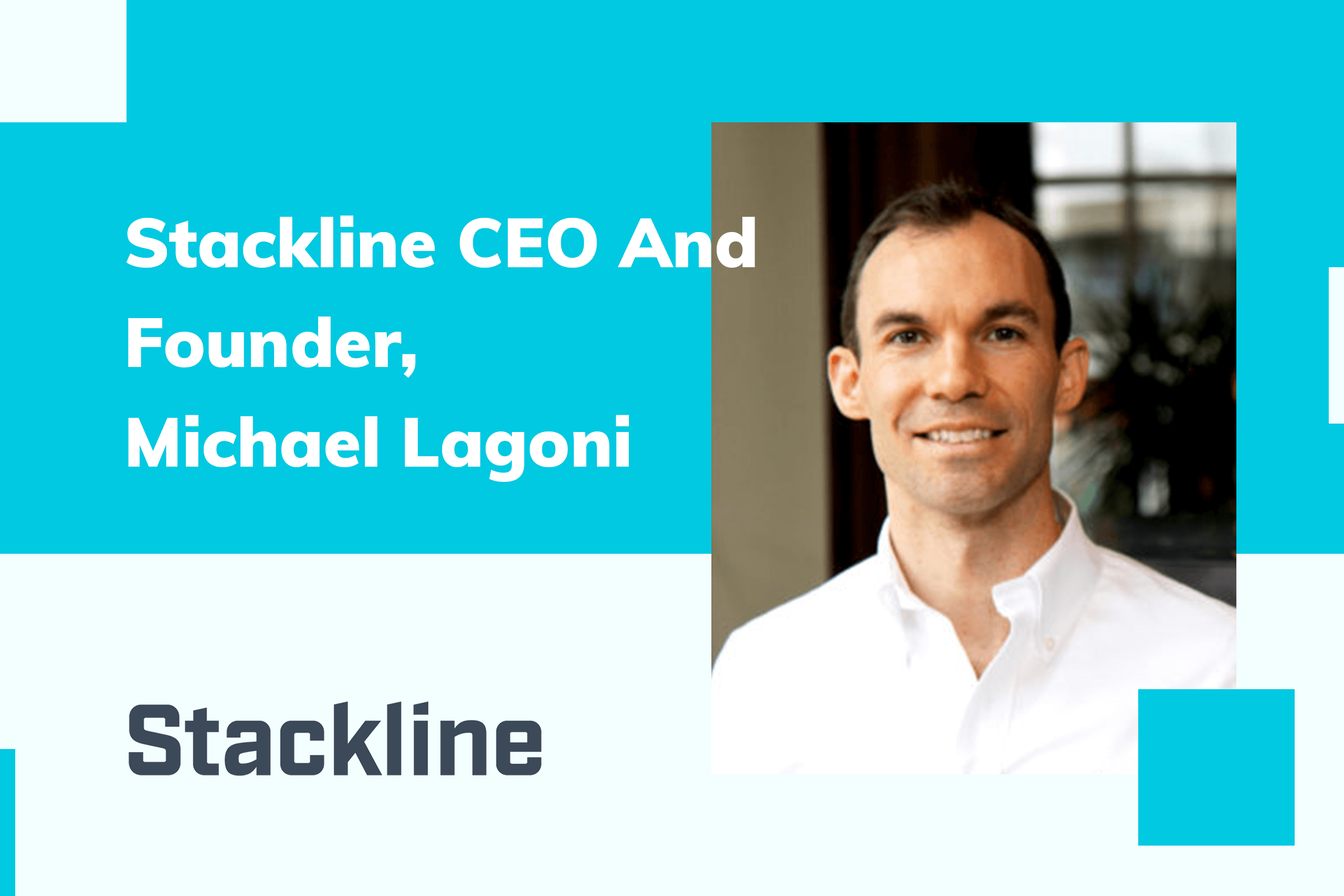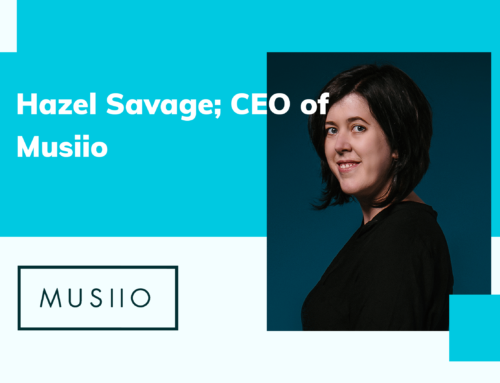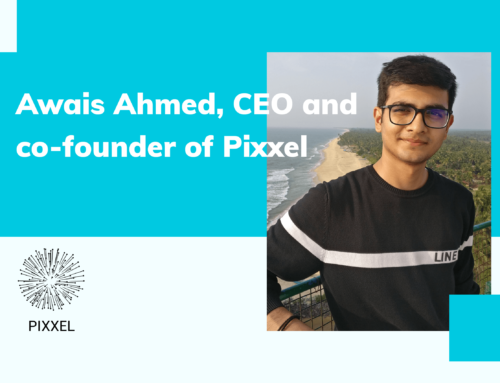Tell us about your role and journey into analytics. Why did you start Stackline?
Working for Amazon several years ago, I saw how e-commerce would continue to grow and transform retail and marketing practices across the globe. At the time, the industry was supported by a long-tail of small, singularly-focused software and service providers, and that created a challenging environment for brands. I watched them scramble to assemble and manage portfolios of technologies and service providers, each one offering a different angle on the truth.
My belief was that if a single company could consolidate all of the data, software tools, and services on one platform, clients could operate far more effectively.
From that founding idea, Stackline has emerged as a leading retail technology company helping more than 500 of the world’s largest brands and retailers grow their e-commerce businesses. We collect and analyze all sales, advertising, and marketing metrics to give clients unmatched visibility into their online retail channel. Our teams of experts then use that body of insight to build and execute tailored strategies that accelerate our clients’ growth.
How is Competitive Analytics different from what it was a few years ago?
Competitive analytics a few years ago consisted of panels and surveys, some retail sales intelligence from brick-and-mortars and a whole lot of old-fashioned vigilance. But today’s competitive analytics can provide connected data across advertising and sales channels and give brands insight into their competitors’ omnichannel strategy, spend, and performance.
Stackline recently launched a software product that gives clients that enhanced competitive insight in their key e-commerce channels. Advertisers can track and manage their advertising investment according to key performance indicators (KPIs) logged across their competitive set, including:
- Organic and paid search traffic
- Cost-per-click (CPC) for all traffic-driving keywords
- Click-thru rate (CTR)
- Return on ad spend (ROAS)
Mirroring the trends driving the rest of the advertising and sales ecosystem, brands have access to more data of higher quality and more levers to pull in the quest for incremental advantage. That, in turn, ratchets up the pressure on brand leaders to rapidly apply insight to execution and adapt quickly to swiftly changing market conditions. Software and services like Stackline’s are successful because our driving purpose is to make that performance management process easier.
What is the current state of e-commerce? How does Stackline deliver on its ROI promises?
One of the things that excite me most about e-commerce is that there is no “current state.” It’s a convergence point for so many high-octane forces, like AI, machine learning, ad ops, and automation.
Even though e-commerce sales make up a minority share of total retail sales, we’re already on the brink of the next transition: ‘online shopping’ is the gateway to forms of intelligent or ‘ambient’ shopping that are even more convenient and even more integrated with our daily habits.
Alexa will know what’s in our refrigerator just like Echo Look knows what’s in our closet and Nest knows which lights are on. As analytics leaders connect more of that data, we’ll be able to help brands and manufacturers build products and content that are highly-customized to individual customer needs.
With our unique combination of e-commerce performance management software and managed services, Stackline helps clients successfully navigate this increasingly connected, hyper-responsive world.
We save brand leaders time by consolidating and organizing full-funnel e-commerce KPIs in one place — from ad spend and market share to conversion rates, inventory levels, and ratings and reviews. And by managing ad spend, merchandising, and inventory planning in accordance with data-driven insights, we help clients find cost-savings and revenue opportunities that have immediate effects on the bottom line.
How do you choose, promote and sustain your markets for business development?
Like our clients, we’re constantly testing and learning.
Every brand and manufacturer that’s selling online is a potential customer, so we have to prioritize channels and verticals where we can most efficiently communicate our value. We take an omnichannel approach and balance earned, paid, and owned opportunities to connect with e-commerce leaders, but we value personal connections above all.
We are an extension of our clients’ teams and want to be experts in their business, and building that kind of relationship takes multiple touch points and trust earned over time.
How much have Marketing and Sales operations changed since the arrival of Automation within BI and Analytics? How can brands leverage these tools?
Marketers love the appropriately cynical John Wannamker quote – “Half the money I spend on advertising is wasted; the trouble is I don’t know which half” – but we’re on the brink of a post-Wannamaker world.
Multi-touch attribution models and ad automation are no longer glimmers in a CMO’s eye. Digital advertising investments can be tightly tuned according to fluctuations in CPC and conversion rates on a given ad network. Effectiveness of product page content and merchandising strategy can be evaluated and updated close to real-time.
Powerful enterprise software like Stackline’s exists to ensure that this wealth of digital advertising and sales data is accessible, thoughtfully organized, and actionable. We’ve been able to automate the execution of many core ecommerce functions, from ad ops to SEO. But ecommerce is a game won by increments, and it still takes active human management to find strategic gaps and opportunities. Stackline’s managed services team can provide that critical layer of oversight to wring more competitive advantage out of every investment.
Which Marketing and Sales Automation tools and technologies does Stackline use at the moment?
Our marketing team uses HubSpot, but we build our ad ops and automation tools in-house.
Tell us about Stackline’s services business.
We built our business on the unique combination of enterprise software and premium managed services, which work hand-in-hand to simplify and accelerate our clients’ path to e-commerce success. When I started the business four years ago, our first clients were services-only. I took on holistic management of their e-commerce channel, running everything from merchandising and inventory planning to content and SEO.
As our software has become more sophisticated, our scope of services has continued to expand. Stackline’s consulting services span forecasting and demand planning, profitability analysis, pricing and promotional strategy, and vendor negotiations.
Our agency services cover omnichannel digital advertising strategy and campaign management, content development, and SEO.
What startups in the marketing technology industry are you watching keenly right now?
As the Internet of Things continues to merge our digital and physical lives, and technologies that capture immense amounts of personal data become increasingly integrated into our daily habits, we’ve seen other sophisticated startups collecting and connecting more of the dots. We’re paying a lot of attention to startups that are connecting data across online and offline environments, like location analytics companies Factual and Placed.
How do you prepare for an AI-centric world as a business leader?
I see AI as an accelerant for greater efficiency and objectivity in our business, helping us build technology that learns and replicates our manual tasks, critical models, and basic decision-making logic to give us time back.
AI will also help us remove subjectivity from core goals-driven processes like inventory planning, distribution strategy, lead management, merchandising, pricing, and budgeting, while simultaneously helping us create experiences for clients and end-customers that are increasingly personalized.
At Stackline, we’ve worked hard to take the guesswork out of e-commerce sales and marketing activities throughout the conversion funnel by starting to automate core functions like keyword bidding in Amazon Advertising paid search campaigns, catalog management and pricing, and product page content optimization.
When we increase the speed of these tasks and align them to objective performance goals, we give teams the ability to focus on higher-order strategic functions, like product innovation, loyalty programming, and relationship management that AI can’t take over (yet).
How do you inspire your employees?
I give them the autonomy to lead in their own way but try to model the behavior that I believe will make them successful in our organization and beyond. I see Stackline as a place ambitious, talented people can come to do their life’s best work.
We’re out on the forefront of some of the most transformative themes in business today: the digitization of shopping, the practical application of big data analytics, and the growth of performance advertising. We want tenacious learners to come to Stackline to help us innovate out on the edge of these trends, and we reward employees for their extraordinary work ethic and appetite for acquiring new skills that push our business and our clients’ businesses forward.
One word that best describes how you work?
Relentlessly
What apps/software/tools can’t you live without?
I find Stackline software to be pretty indispensable at this point, but I realize I’m biased. LinkedIn and Twitter help me stay up-to-date on breaking industry conversations externally, while Slack helps me keep up with the stream of projects evolving at the office.
What are you currently reading?
I’m reading Undaunted Courage by Stephen Ambrose. It details the venture formed by Thomas Jefferson, Meriwether Lewis, and William Clark to explore the frontier and find a Northwest passage. I’m most intrigued by the psychological and sociological dynamics that propelled this small group with limited resources to embark on a journey into uncharted and dangerous territory in pursuit of a seemingly impossible task. It should be required reading for every entrepreneur.
What’s the best advice you’ve ever received?
Treat every customer as if they were your only customer. That mindset will help you deliver the highest level of service and give you access to the feedback you need to refine the early versions of your offering.
If not into advertising, what would have been your alternate career choice?
Running back for the Pittsburgh Steelers. (Maybe it’s not too late?)
Tag the one person in the industry whose answers to these questions you would love to read.
It’s a three-way tie between Jeff Bezos, Andrew Moore of Google, and the kid no one’s heard of yet who’s about to drop out of MIT or Harvard.
Thank You, Michael, for answering all our questions. We hope to see you again, soon.
Read from the original source: salestechstar





Posted by
Marta Hi! I'm Marta, project manager for Luminary Chiefs. Here to help, post and make sure everything looks great for you.